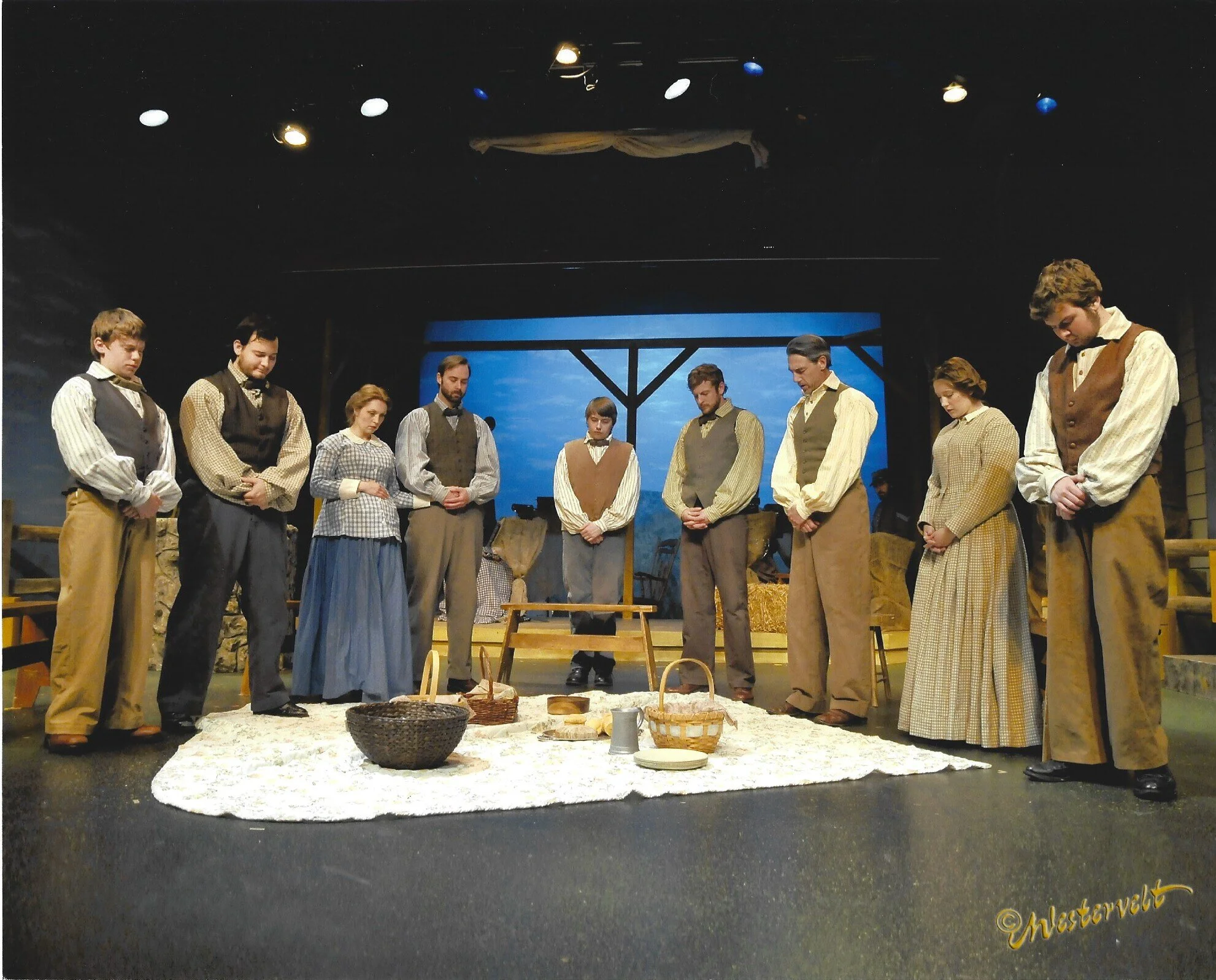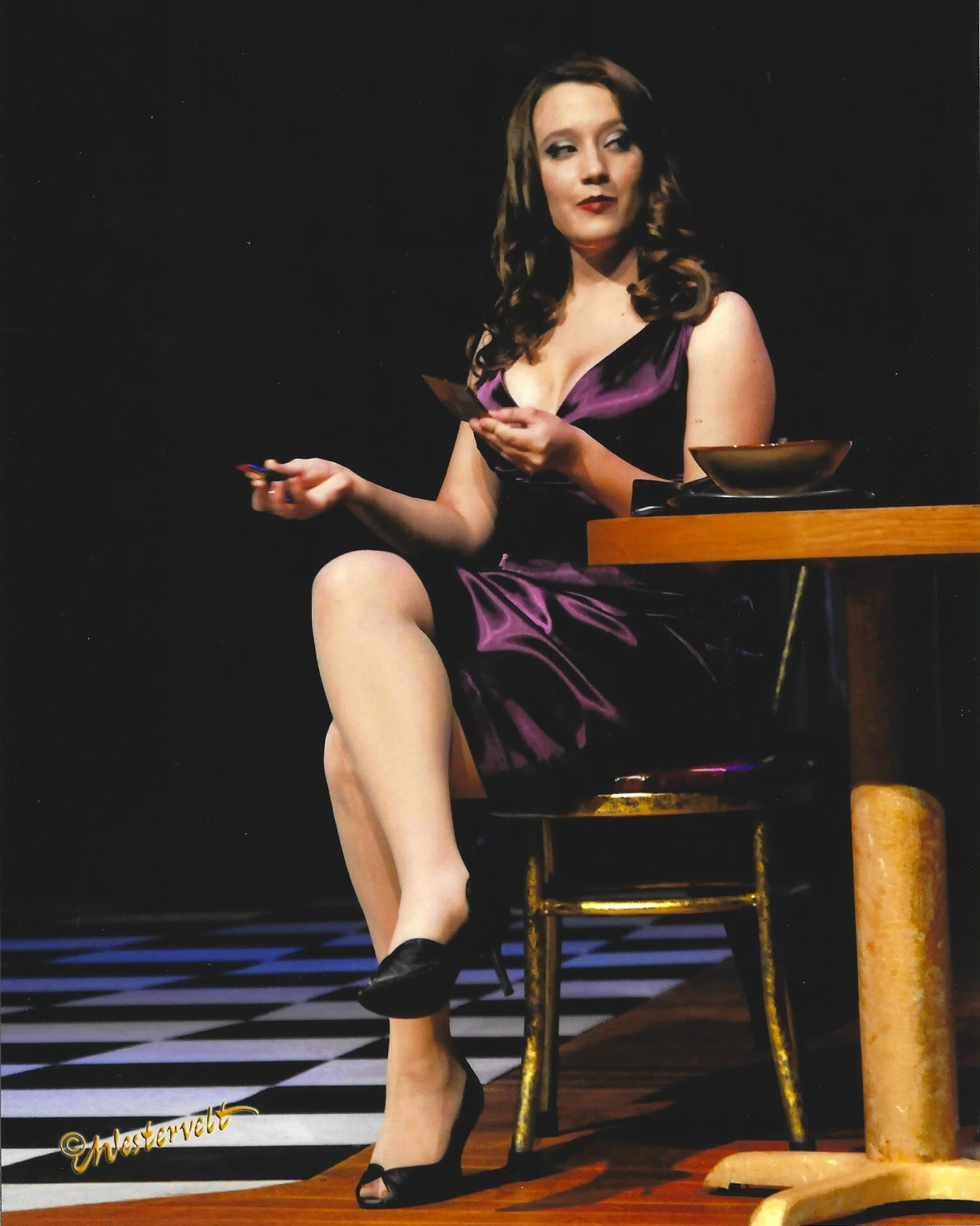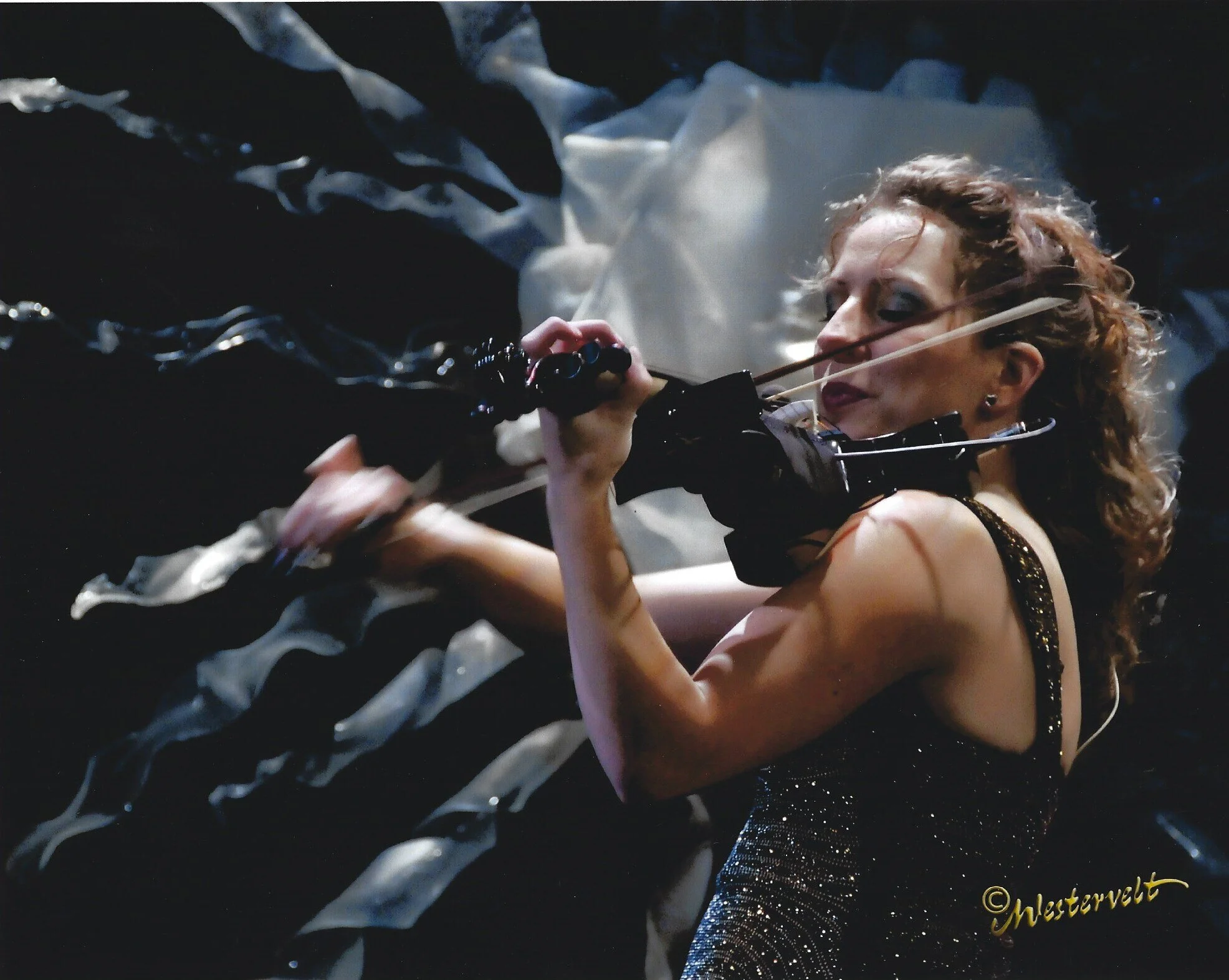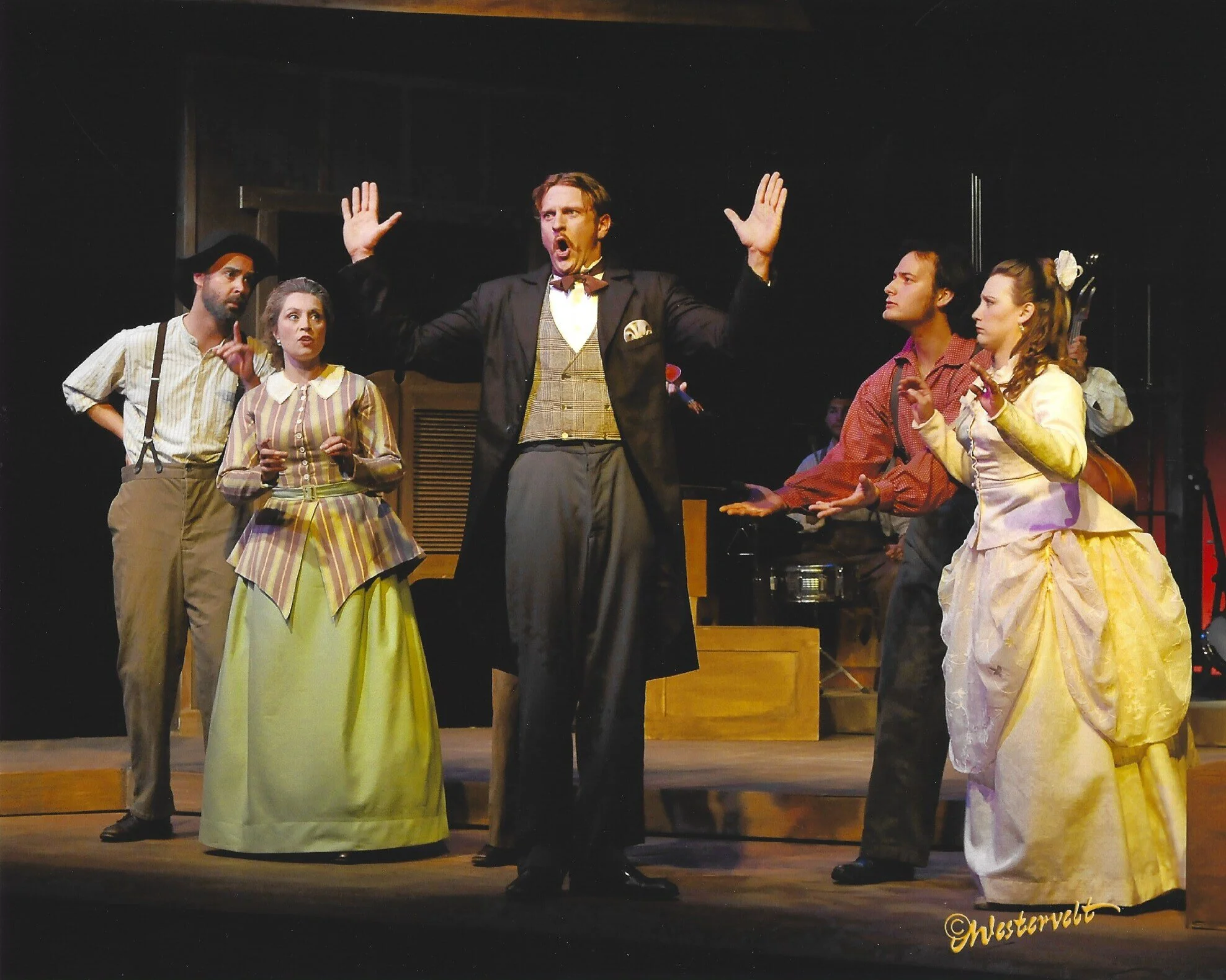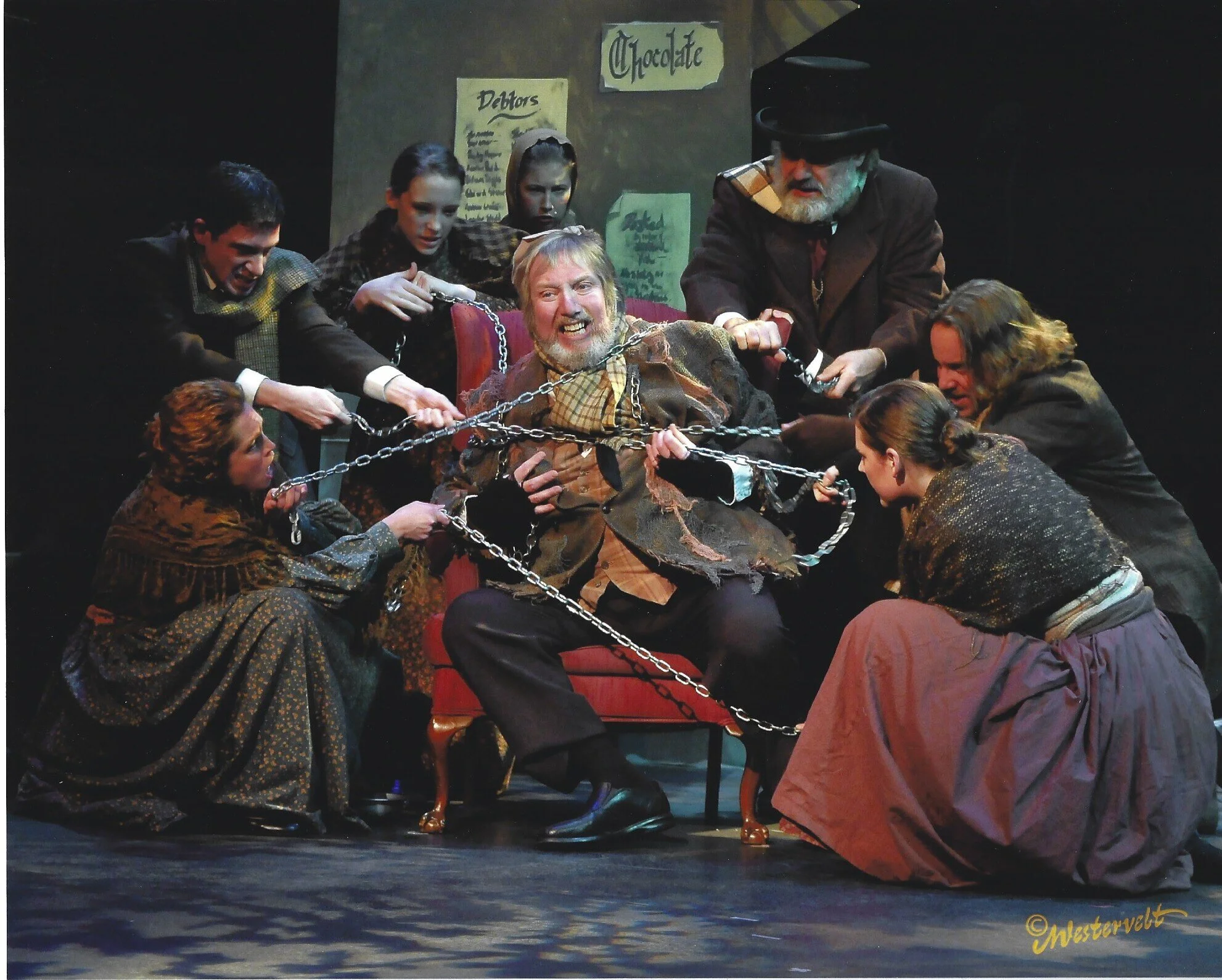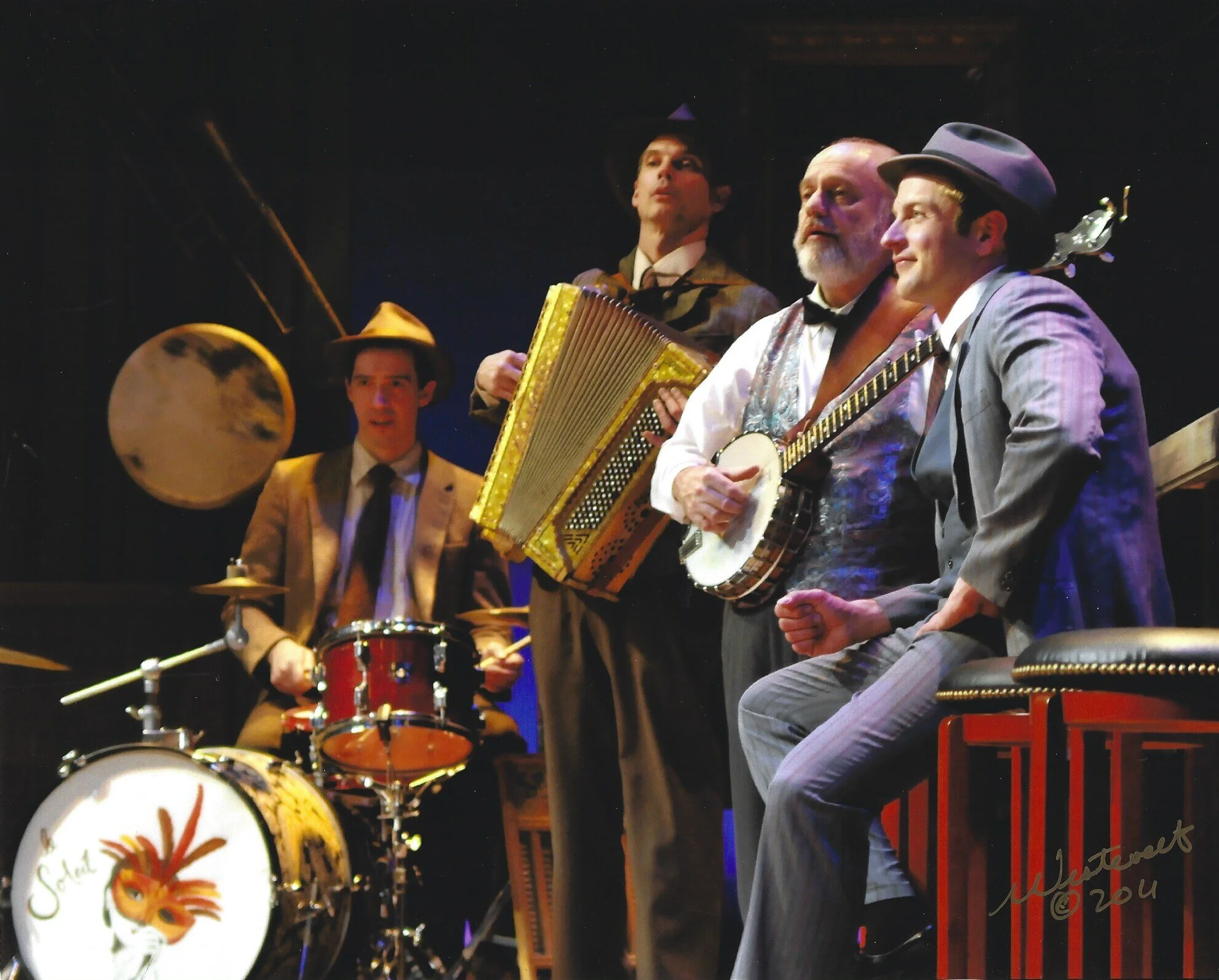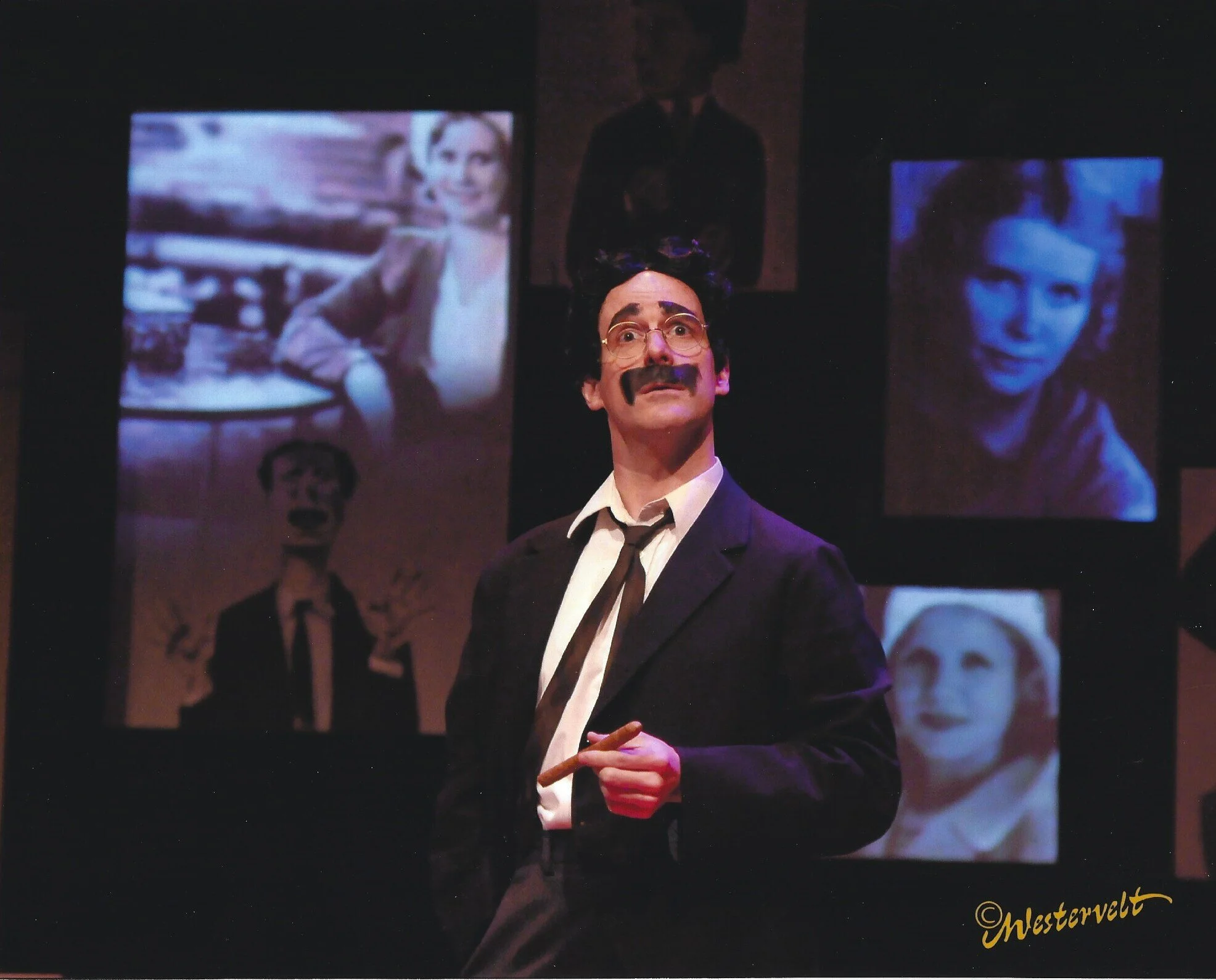Warner Crocker: 2010-2011
Much of the material found in the files for the 2010/2011 season deals with the Theatre’s financial issues, the decline in ticket sales, and state of the nation’s economy. In going through this material, one gets a good impression of the valiant struggle the Theatre exerted to stay alive.
Shenandoah. June 5 - July 3, 2010. L(?), Aaron Mann, Thomasin Savaiano, Bill Diggle, Brandon Shockey, Eddie Staver III, Thomas Adrian Simpson Katherine Yacko, (?).
The season opened with a most appropriate title, considering the theatre’s geographical location, the musical Shenandoah. Playing the lead was Washington actor, Thomas Adrian Simpson, who had previously appeared on Wayside’s stage, along with local actors and interns. In addition to indicating the members of Actors’ Equity Association, five of the cast members were credited as being a “participant in Wayside Theatre’s Education Program or Member of Wayside Theatre’s Young Ambassador’s Guild,” meaning they were high school age or younger. (Wayside Playbill. Shenandoah. 2010). Some cast members also played a musical instrument in the ensemble that was also incorporated into the action. Most reviews are positive about the production, but one felt it was “less compelling than other Civil War themed productions Wayside had presented (Horan. “Wayside’s ‘Shenandoah’ ….” NVD. 10 June 2010).
Dead Man’s Cell Phone. July 17 - Aug. 14, 2010, Katherine Yacko.
Always, Patsy Cline, previously seen during the 2008/2009 season, was next on the schedule. However, this production was not performed on Wayside’s stage, but at historic Jordan Springs, a few miles outside of Winchester. The two actresses were praised for their singing and acting, and some reviewers felt the ‘dinner-theatre’ environment worked perfectly for this two-person show that was accompanied by an excellent band. The show is held together by Louise, a friend of Patsy’s, who “serves the production as actor, narrator, dancer, backup-singer, band conductor, and comedian. Her narrative connects the various vignettes of the show …” (Ball. “Dinner theater perfect ….” TWS. 16 July 2010). The owner of Jordan Springs and Wayside Director, Warner Crocker, both expressed their excitement over this joint venture. Crocker states, “We are looking forward to seeing this relationship develop. And what could be better—Patsy Cline and Winchester” (Sackrider. “Patsy Cline ….” PG. 16 July 2010).
The second play, Dead Man’s Cell Phone, was on Wayside’s mainstage and was a work that had premiered in Washington, DC in 2007. This play, which asks the question, “whether the digital age has connected or disconnected us from intimate relationship—from love?” was a departure from the usual Wayside fare. White suggests that Wayside “is being a bit daring in bringing this quirky, funny, modern play to life,” but concludes, “there are some intellectually stimulating ideas in this show” (White. “Wayside’s 2nd play ….” TWS. 23 July 2010). The cast was quite strong, particularly Thomasin Savaiano, Liza Vann, and Kate Kiley, the latter name “is perfect for the part of Mrs. Gottlieb [as she] commands attention every moment she is on stage” (White. 23 July 2010). Another writer concludes “the play takes its humor straight from Monty Python. It’s unexpected, incongruous and deadpan” (Lawrence. “No hang-ups ….” CSE. 23 July 2010).
Striking 12. Aug. 28 - Sept. 25, 2010. Sarah Story.
Striking 12, which was another rather daring selection for Wayside, followed. Played on an almost bare stage with an actor seated at a drum-set in the center, and another actor at a keyboard stage left, the third character, playing an electric violin, and was free to move about. The three performers seem to “revel in the score, performing their solos with style and blending their voices seamlessly, often in close harmony, while deftly playing their instruments.” A fourth character appears on occasion, exhibiting “graceful dancing [that] complements some of the songs” (Horan. “Music elevates Wayside’s ….” NVD. 2 Sept. 2010). Another writes, “It’s hard to explain but easy to experience—a fusion of music, song, story, and humorous retorts. ‘Striking 12’ may be viewed as a loose musical adaptation of Hans Christian Anderson’s fairy tale, ‘The Little Match Girl’ ” (White. “ ‘Striking 12’ fuses ….” TWS. 2 Sept. 2010). Add to this the stunning lighting effects! It was obviously a show to experience.
A Murder, A Mystery, A Marriage. Oct. 9 - Nov. 6, 2010. Bill Diggle (L), Thomasin Savaiano, Eddie Staver III, Aaron Mann, Katherine Yacko.
Striking 12 was followed by another entertaining show, A Murder, A Mystery, A Marriage. Based on the short story by Mark Twain, this production was portrayed by an “enthusiastic cast performing material loaded with exaggerations, stereotypes, and absurdities.” The writer adds that, while billed as a mystery, it is not filled with suspense, but is a “fast moving run of events full of surprises and novelties” (Lowe. “Enthusiastic cast carries ….” TWS. 15 Oct.2010). Another writer summed up the performance stating, “As is usual in Wayside shows, the music is beyond reproach” and even calls some voices “pure heaven.” She praises the “quick-witted staging … and suppleness of Wayside’s cast and crew” (Lawrence. “Murder, mystery ….” CSE. 21 Oct. 2010).
A Christmas Carol. Nov, 27 - Dec. 24, 2010. James Fleming in chair,
The original plan for the December show was to premier a new work. However, this did not pan out, as the script needed too many adjustments. So, instead of having a premier, the traditional Christmas Carol show that was first performed in 2003 and again in 2008 was staged. Due to the number of performances scheduled, the show was again double-cast. In this production, a set of identical twins were cast as the Ghost of Christmas Past and were directed quite ‘ghostly’ - - one would exit stage left as the other would enter stage right, never appearing on stage at the same time, thus creating a wonderful illusion. Another feature in this production was that “much of the cast remains on stage throughout, hovering at the fringes, chiming in like a Greek chorus … and even portray scenery such as door knockers and Scrooge’s desk” (Horan. “ ‘Christmas Carol’ scratches ….” NVD. 26 Nov. 2010). Once again, the Christmas show was a great success.
Despite a season of successful productions, 2010 was a year when the financial support of the Theatre had become a serious issue and a strong attempt was made to alert the area residents to this crisis. This was also aggravated by the decline in grants and funding by the State. An emergency campaign was launched to meet a $20,000 challenge grant that would provide a much needed $40,000 for the theatre. In addition, three public meetings were scheduled at the Theatre for people to learn more about the seriousness of the financial situation and to “seek input from the community about the venue, what people want from it and whether they feel it should continue” (“Wayside Theatre sets ….” TWS. 20 July 2010). It is said that the first meeting was attended by only six people, three of whom were members of Middletown’s town council. Information on the other meetings is not known. A fundraising event was held in March of 2011, featuring ‘60s music, performed by Robbie Limon and others, held at the Corron Center, Lord Fairfax Community College, north of Middletown. It isn’t known how successful this event was. While the Theatre’s financial status had always been tenuous, this was the first time since the three-show season of 1980 that it seemed to have reached such dire conditions.
Southern Crossroads. Jan 29 - Mar. 12, 2011. Vaughan Irving (L), Robbie Limon, Bob Payne, Eddie Staver, III.
To begin the new calendar year, another original work was seen on stage, Southern Crossroads: The New Orleans Adventure, written by the same team as the 2009 show. This time, the story is a prequel that “brings to life the backstory from the first show, explaining more about how the family of musicians began their career on the road” (Keelor. “Way Down South.” NVD. 20 Jan. 2011). The characters are basically the same in this show as were most of the actors, although a couple of replacements were made. The songs in the new script “range far and wide—folk, bluegrass, gospel, even a few Irish jigs—and are ably performed both gleefully and soulfully, sometimes unaccompanied but more often on a variety of instruments that get passed around the group” (Horan. “Wayside’s prequel holds ….” NVD. 26 Jan. 2011). One reviewer lists the titles of the familiar songs and how each actor makes each song a ‘showcase’ for their talent. “The ensemble cast of 10 create an orchestra on stage consisting of accordion, dulcimer, guitar, whistles, jugs, trumpet, piano, banjo, bass, harmonica to list only a few.” She urges her readers, “For some good, familiar, old-time music played by a group of very talented musicians, go see Southern Crossroads: The New Orleans Adventure (White. “Good times roll ….” TWS. 3 Feb. 2011). And, it seems that the set for this show made the Wayside stage appear to be larger than it really is!
Groucho. March 26 - April 23, 2011.. Peter Boyer.
“On the tightest of budgets, artistic director, Warner Crocker, pulls yet another rabbit out of the hat” to close “the financially wobbly Wayside Theatre’s 49th season” (Barr. “Grouch and his brothers.’ ” Warren County Report. Mar. 2011). Starring as Groucho Marx was Washington actor, Peter Boyer, who uses an interesting stage device to begin the show. “Boyer make himself up and adds to his costume while on stage talking to the audience. He never misses a beat as he transforms from a young optimistic teenager to a seasoned veteran of radio, television, stage, and film. His addition of the mustache to the graying hair quickly transforms the younger to the much older.” The writer praises the work of the cast, especially Vaughan Irving who plays both Chico and Harpo, concluding, “For younger theater-goers, it is a historic look at how entertainment has evolved over the decades from the roots of variety, quiz and comedy shows to new versions showcasing talent and dancing competitions (Lowe. “Authentic ‘Groucho’ on ….” TWS. 2 Apr.2011). It was a delightful evening!
The 2010/2011 season produced some excellent shows. Although the season ended strongly, the theatre continued to battle the financial cloud that threatened its very existence. Would there be another season?
